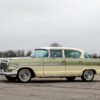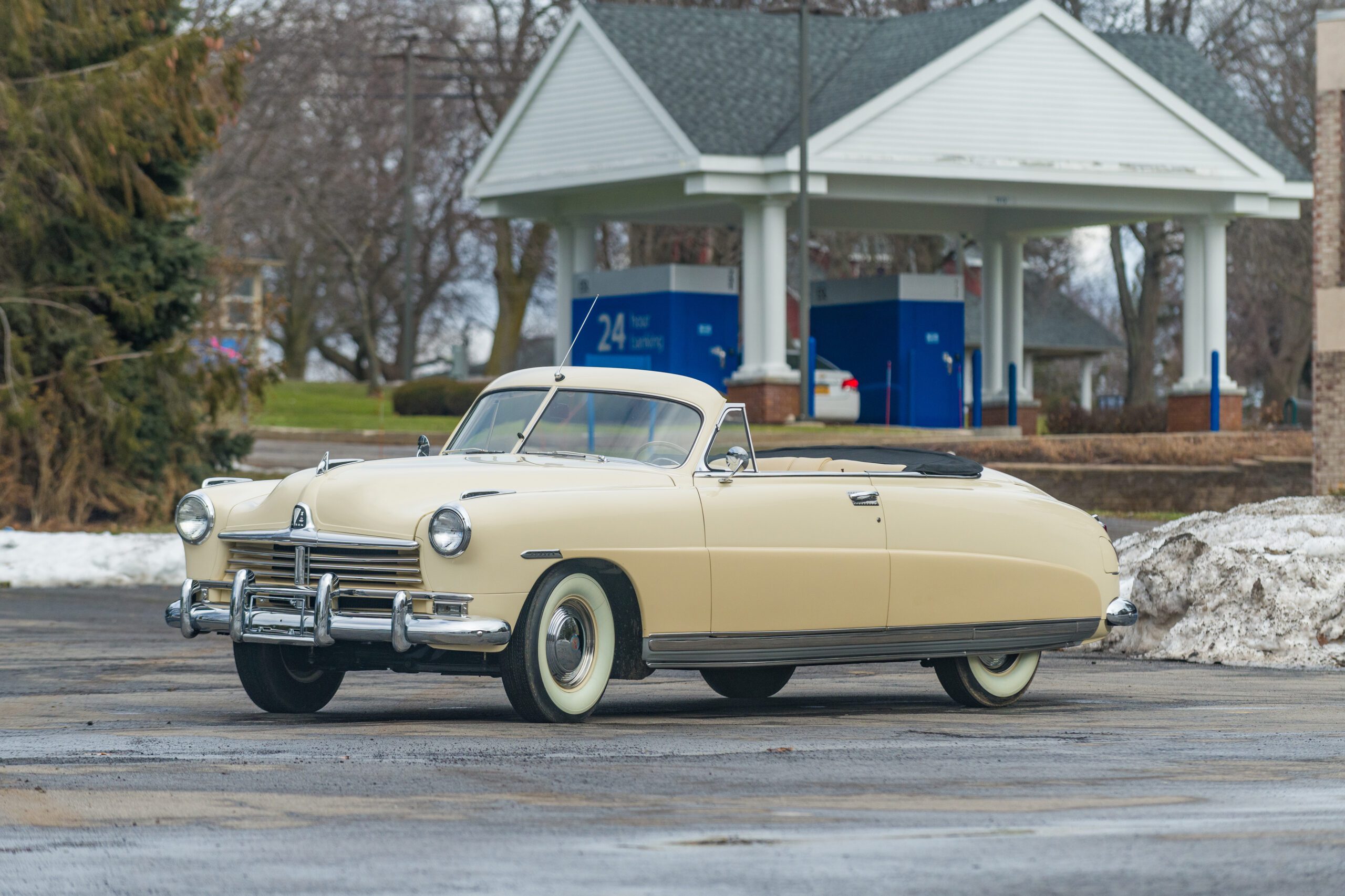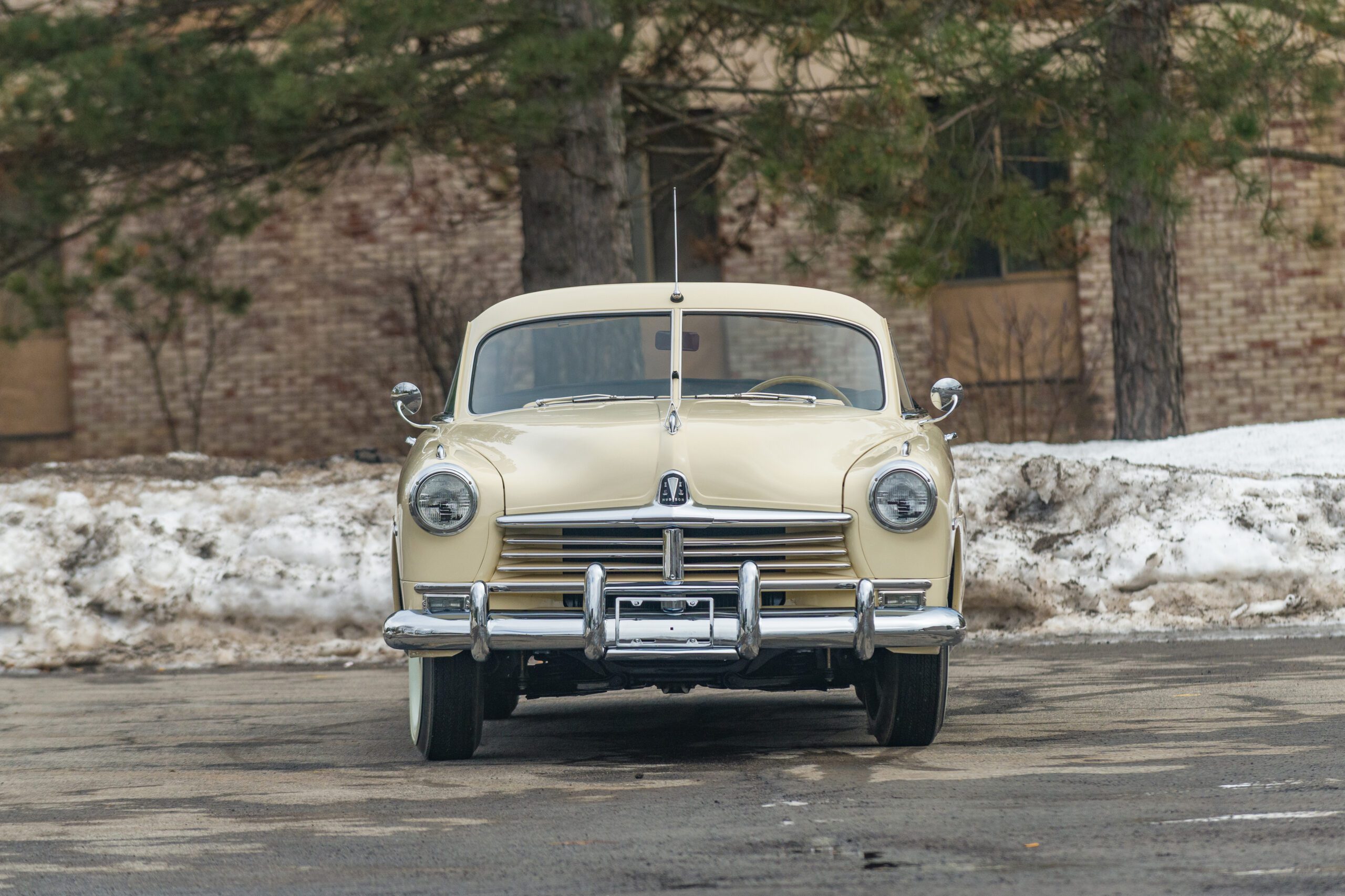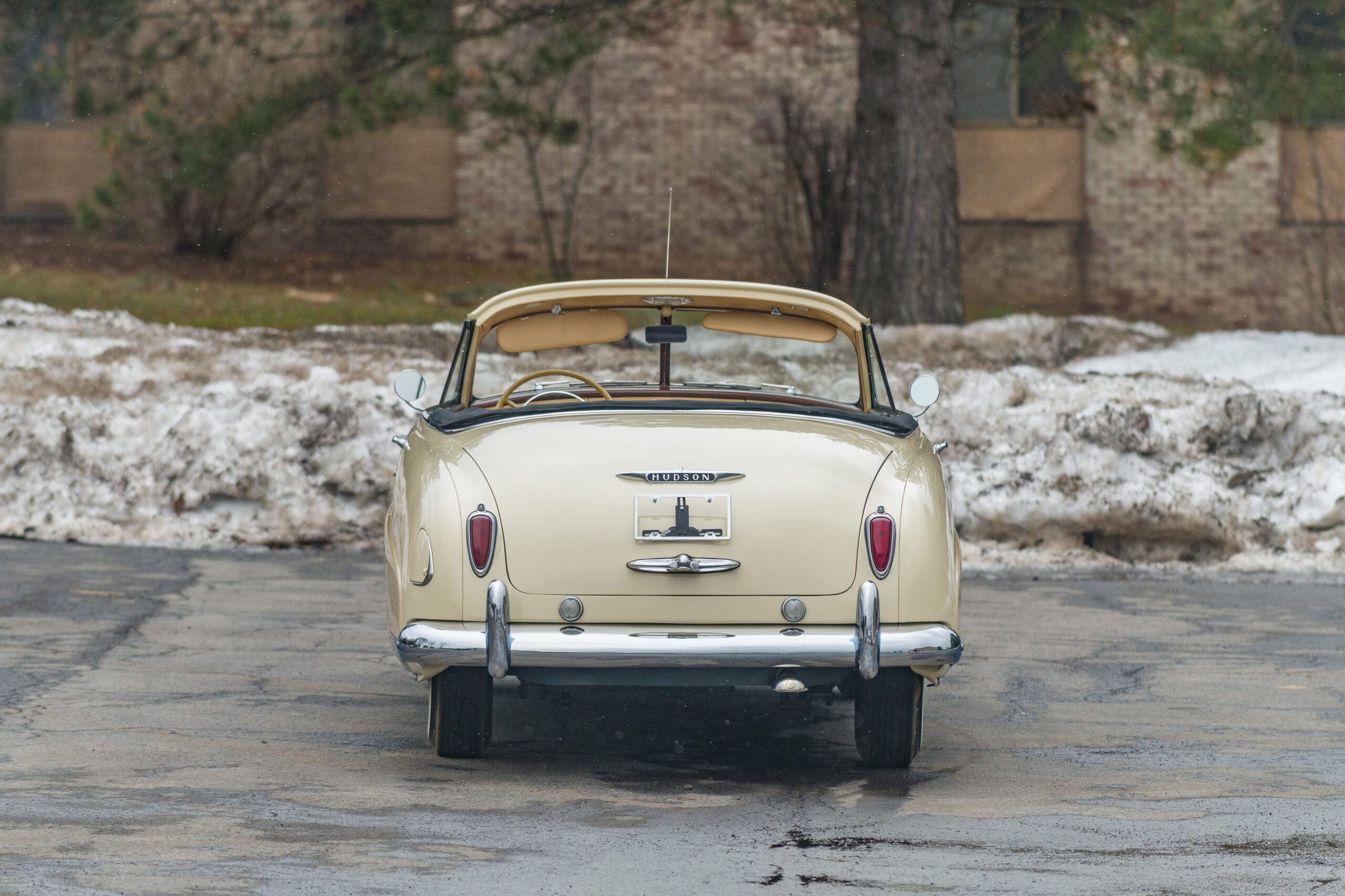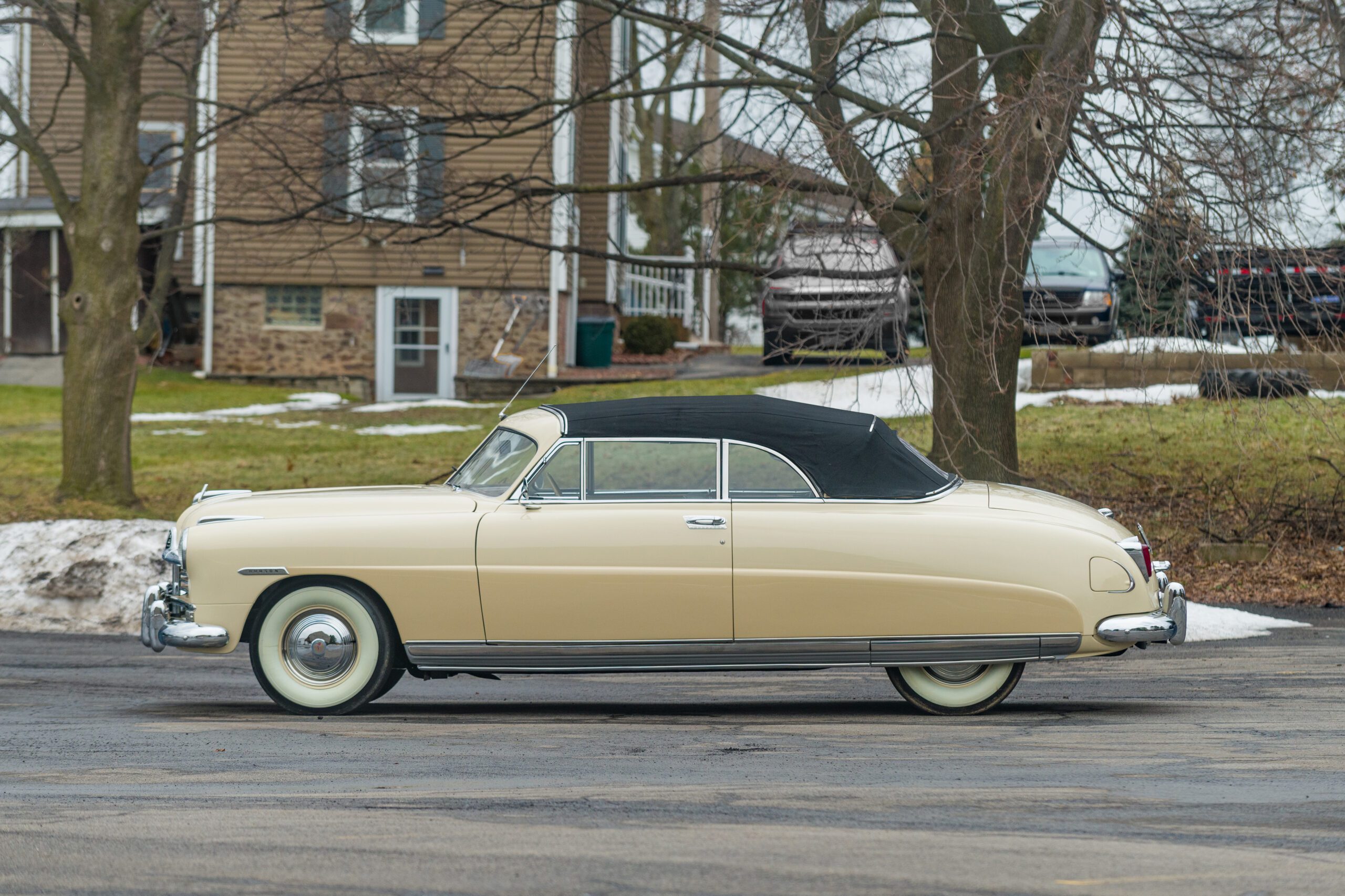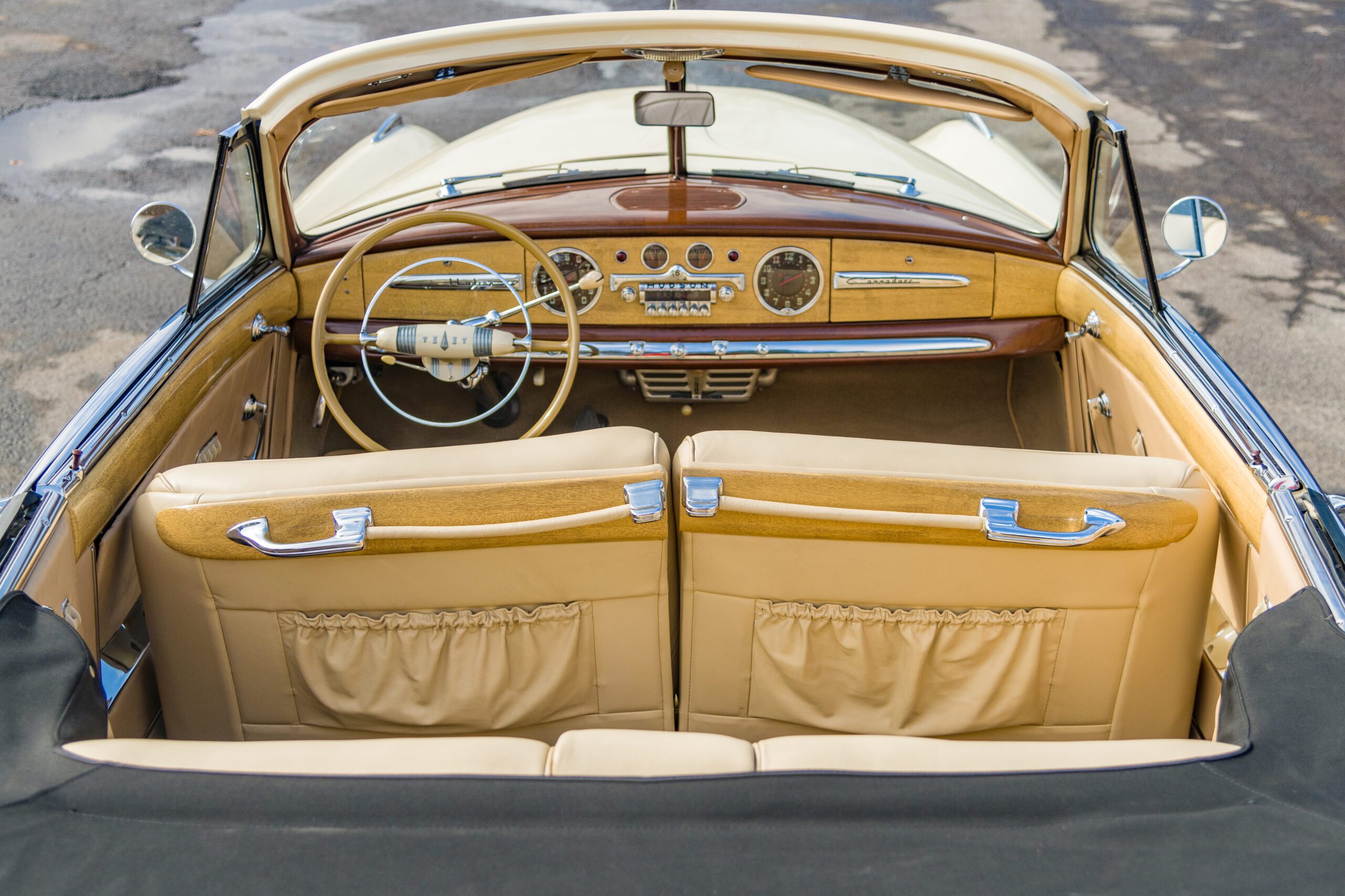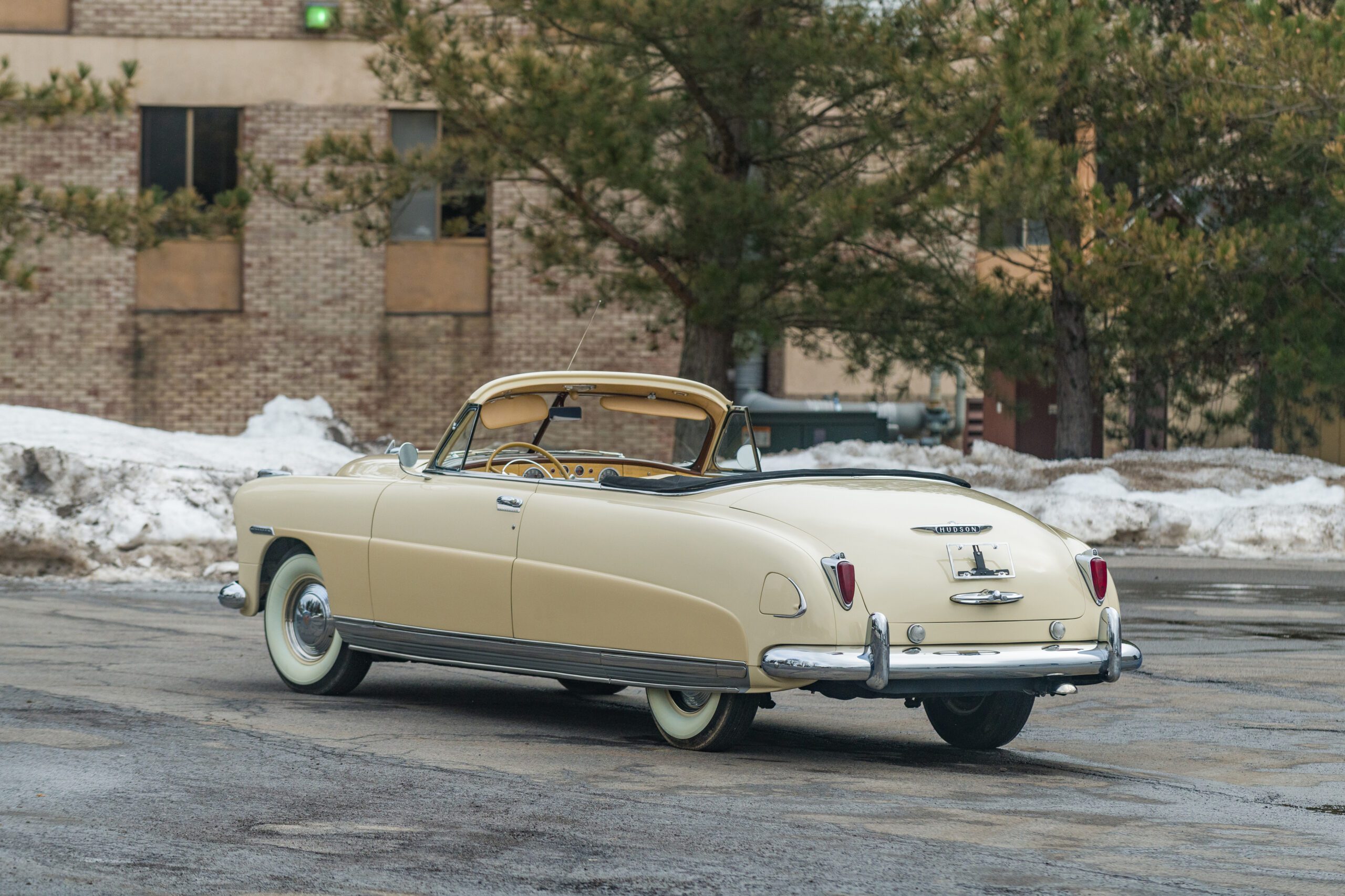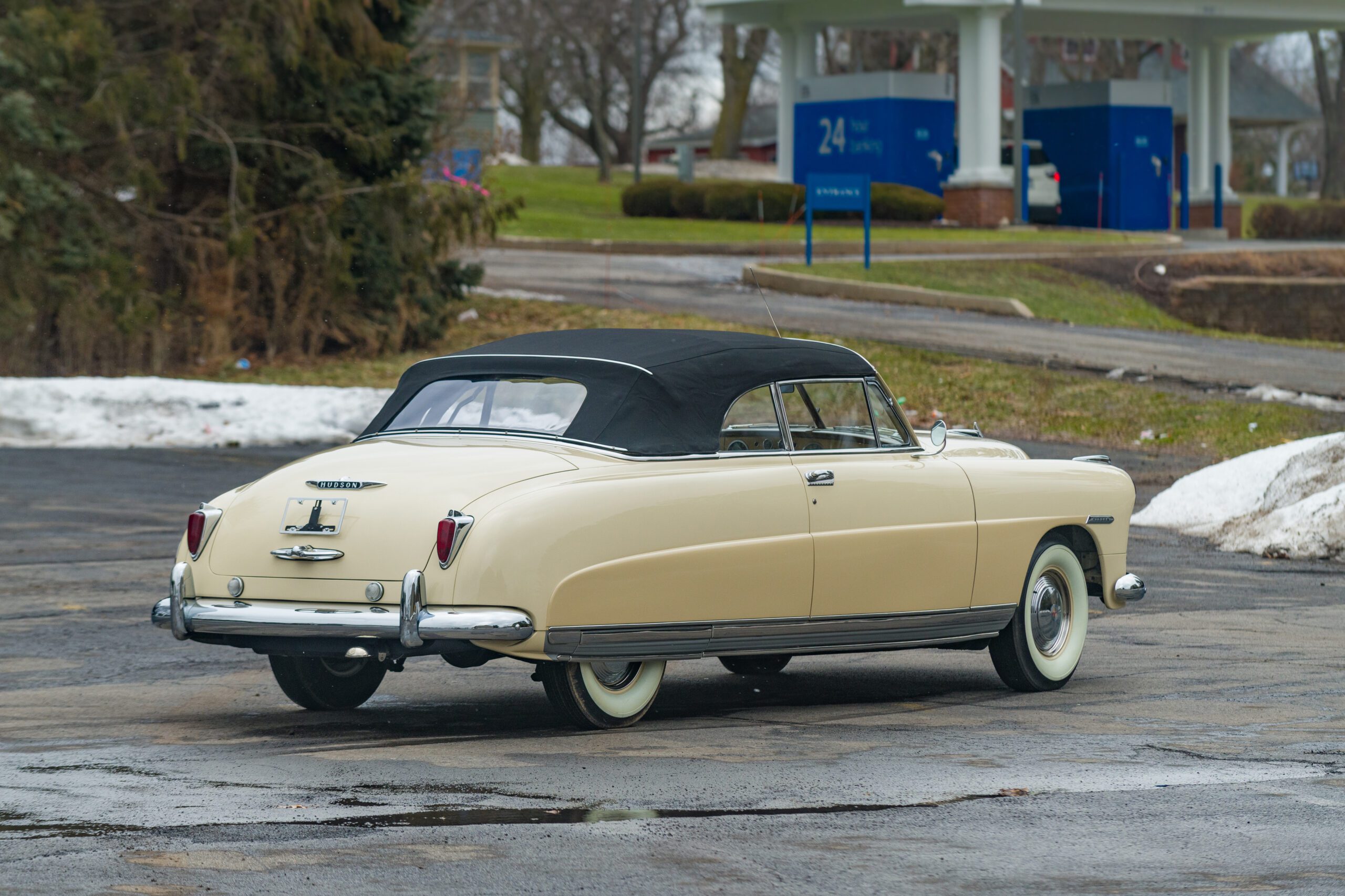Hudson stood out as one of the pioneering Detroit automakers to unveil new models in the aftermath of World War II, boasting designs that were undeniably the most strikingly different among its peers. In 1948, Hudson introduced a revolutionary innovation: the “step-down” chassis, featuring footwells recessed between the body stiffening members, embodying an early iteration of the “unit body” concept that seamlessly merged the body and frame into a single, welded unit.
Notably, the rear frame members extended outside the rear wheels, ensuring that the Hudson’s rear wheel skirts served a functional purpose rather than being mere embellishments. Standing at a mere five feet tall, the initial “step-down” Hudsons set new standards for speed and handling, thanks to a combination of Hudson’s reliable six- and eight-cylinder engines and the “step-down” design’s low center of gravity and relatively light weight.
The distinctive design and exceptional road performance of the “step-down” Hudson seemingly caught the attention of Steve McQueen, known for his appreciation of idiosyncratic and offbeat designs. The “step-down” Hudson effortlessly met the criterion for distinctiveness. In late 1948, convertible “step-down” models entered full production for the 1949 lineup. At the apex of the 1949 Hudson range was the Commodore line.
Photo Source: RM Sotheby’s




